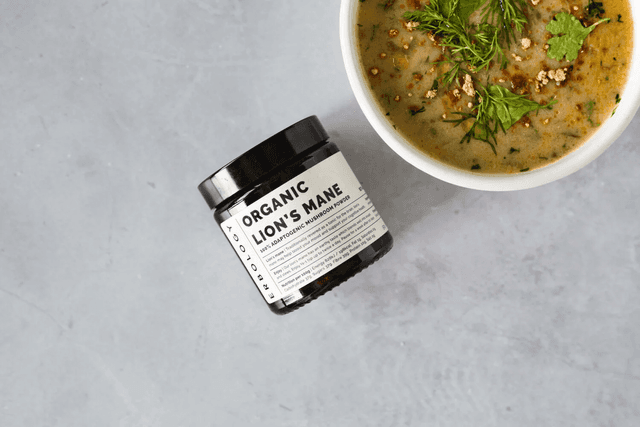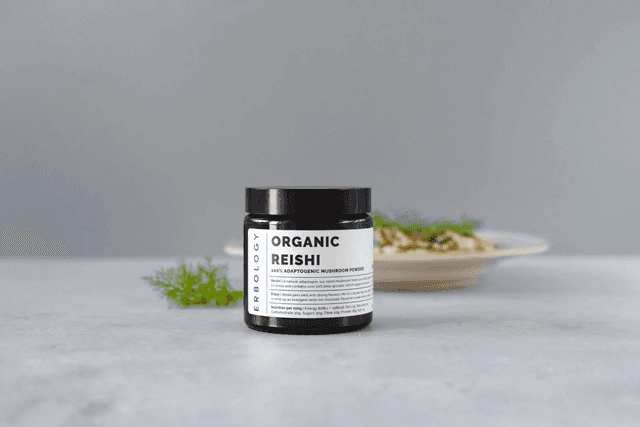11 Dec 2020
Cordyceps benefits: Himalayan gold
What is cordyceps?
Cordyceps is a fungus. Practitioners of traditional medicine have used it for generations to treat a range of ailments across different countries and cultures. Its Latin name is Ophiocordyceps sinensis.
When growing in the wild, it looks a bit like a collection of thin, yellow-brown fingers. However, it’s often dried when used for medicinal purposes. In this form, it looks quite like dry autumn leaves.
Cordyceps has been used as a traditional remedy for thousands of years, dating back to 620 AD. Back then, many thought of it as a magical creature with the ability to change from an animal to a plant.(1) It’s a beautifully poetic way of describing cordyceps’s unique life cycle, which we’ll talk about more below.
In literature, cordyceps made an important appearance in a key Chinese medical text, Ben Cao Bei Yao, in 1694. It has been one of the most important herbs in traditional Chinese medicine ever since.(2) → See Medicinal Mushroom Products
Cordyceps grows in popularity
In Nepal, meanwhile, reported cordyceps benefits include the treatment of diarrhoea, headache, cough, rheumatism and liver disease. In fact, the locals value cordyceps so much that it has acquired the nickname of ‘Himalayan Gold’.(3)
However, this has not necessarily been good news for the famous fungus.
A survey in 2007 revealed that the yield of natural Ophiocordyceps sinensis had decreased by 90% in the previous 25 years. This was mostly due to the restriction of its natural habitat.(2)
The decline in the amount of cordyceps also led to a spike in its price. In India, for example, a kilogram of wild cordyceps could set you back 100,000 rupees, or around £1,056.(3)
Partly to protect the remaining wild cordyceps, and partly to answer a growing demand, a lot of the cordyceps available on the market now is cultivated rather than foraged.
You may just be glad of that fact, as you read on…
The cordyceps fungus: fiend of nature?
As medicinal mushrooms go, cordyceps certainly has the most impressive origin story. It’s not for the faint of heart!
Most mushrooms are saprophytes. This means that they consume decaying matter, which is hugely important for the ecosystem. Saprophytes effectively gather up the nutrients from fallen plants and make them available again to organisms that come along and, in turn, eat them.(4)
Not cordyceps.
Cordyceps has a fascinating life cycle which makes it unique in the world of nature. Rather than growing on decaying matter, it makes use of a live host: moth larvae.
The spores of the cordyceps fungus infect the moth larvae during the summer, when they are underground. The spore grows inside the larva, using it for food during the winter.
When spring arrives, the fungus directs the larva to the surface of the earth. There, the larva dies and the fungus emerges from it in the form of a stalk.
This led to Tibetan locals naming it ‘yartsa gunbu’, which translates as ‘winter worm, summer grass.’ In English, Cordyceps sinensis is known as ‘caterpillar fungus’.(5)

Related reading
Cordcyeps cultivation
Fortunately, no caterpillars were harmed in the making of our 100% Organic Cordyceps Powder!
As mentioned above, the vast majority of cordyceps on the market today grows in carefully controlled conditions. Part of the cultivation process involves choosing a specific substrate for the fungus. To replace the fungus's usual source of food, modern producers tend to grow cordyceps on a liquid or lignocellulosic (wood-based) medium. This provides the fungus with all the nourishment it needs to grow, without having to depend on any unfortunate moth larvae.
This commercially-grown version of cordyceps is called Cs-4. It only produces the mycelium (the thread-like branches of fungi) without the cap.
Cultivating cordyceps not only saves the lives of many a terrified caterpillar, but also helps protect the rare wild fungus from over-foraging.
So, now we know about where this fantastic fungus comes from, let’s take a look at cordyceps benefits for your health. → See Medicinal Mushroom Products



